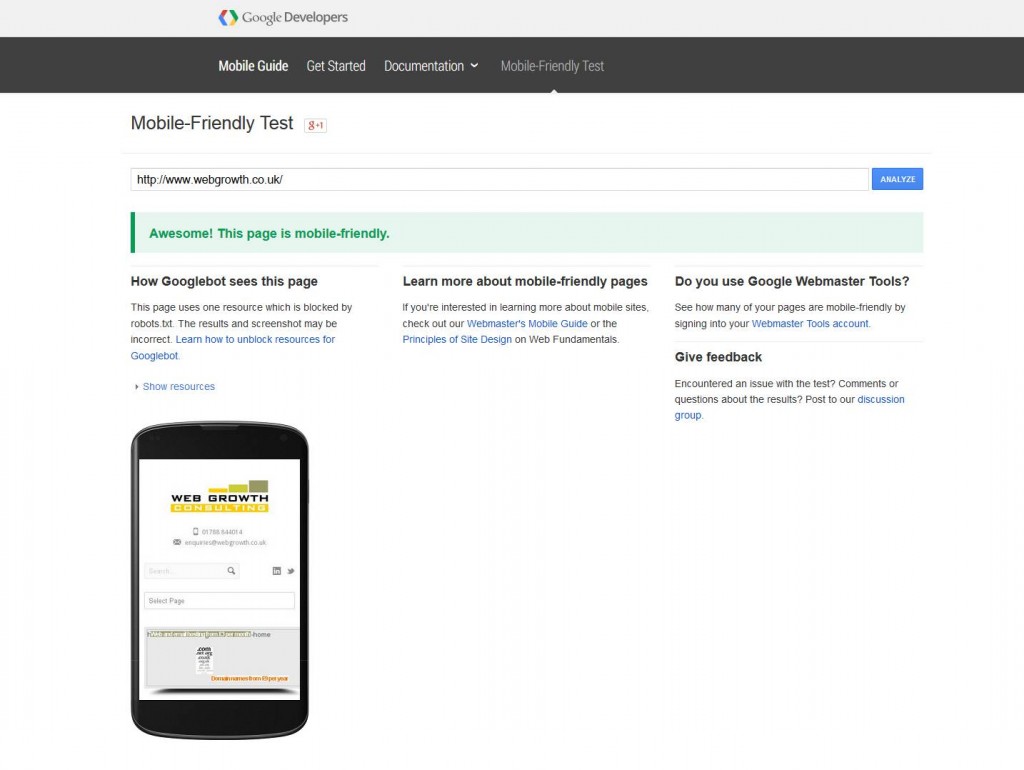After you have used Google Analytics to review your website data you should have a clearer idea of when you get the most visitors and the devices being used to visit your website. This is important information that will help you plan how your website needs to change to encourage more visitors. As well as Google Analytics there a number of free tools that help you check your website for mobile friendliness, speed and identify any other issues that you need to resolve to help you develop your responsive web design:
- Test your website for mobile friendliness – Use Google’s own mobile friendliness tool, to add your domain name and it comes back back with a simple thumbs up or thumbs down pass or fail, plus some feedback.
- Test your website speed – This is an important ranking factor for Google: all other factors being equal the faster a website loads, the higher it will rank. Therefore it’s no surprise that Google provides its own tool for checking how quickly your website loads – Google’s Page Speed Insights tool.
- Use Google Webmaster tools – When logged into Google Webmaster Tools you can navigate to the Mobile Usability Report and see specific issues WMT is showing with specific pages there, as well. Google is currently sending out notifications through Webmaster Tools for sites that won’t meet the new mobile friendliness requirements.
- Check your current traffic levels and the breakdown of Desktop vs Mobile vs Tablet users – If you use Google Analytics you can find this data in Reporting > Audience > Mobile > Overview. Compare this to the latest average statistics using Statcounter. How you interpret these results is important. For example if your website is showing low Mobile traffic this could either be the nature of your current customer base or, and more likely, your website does not provide a good user experience for mobile users and people don’t bother using a mobile to view it. From the 21 April 2015 your website may be penalised on the search engine rankings for mobile users.
All of the tools mentioned give you an insight into how your current website is performing and areas for improvement for a responsive web design that will help you meet the demands of a changing market.






